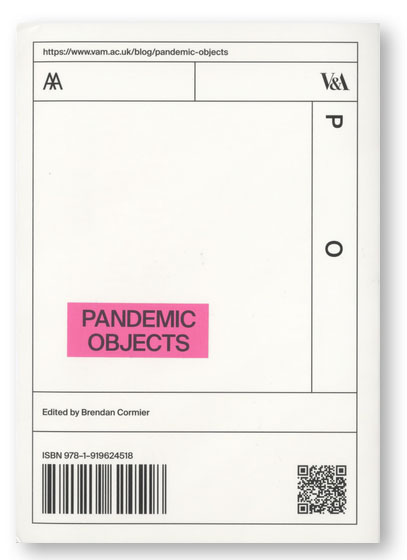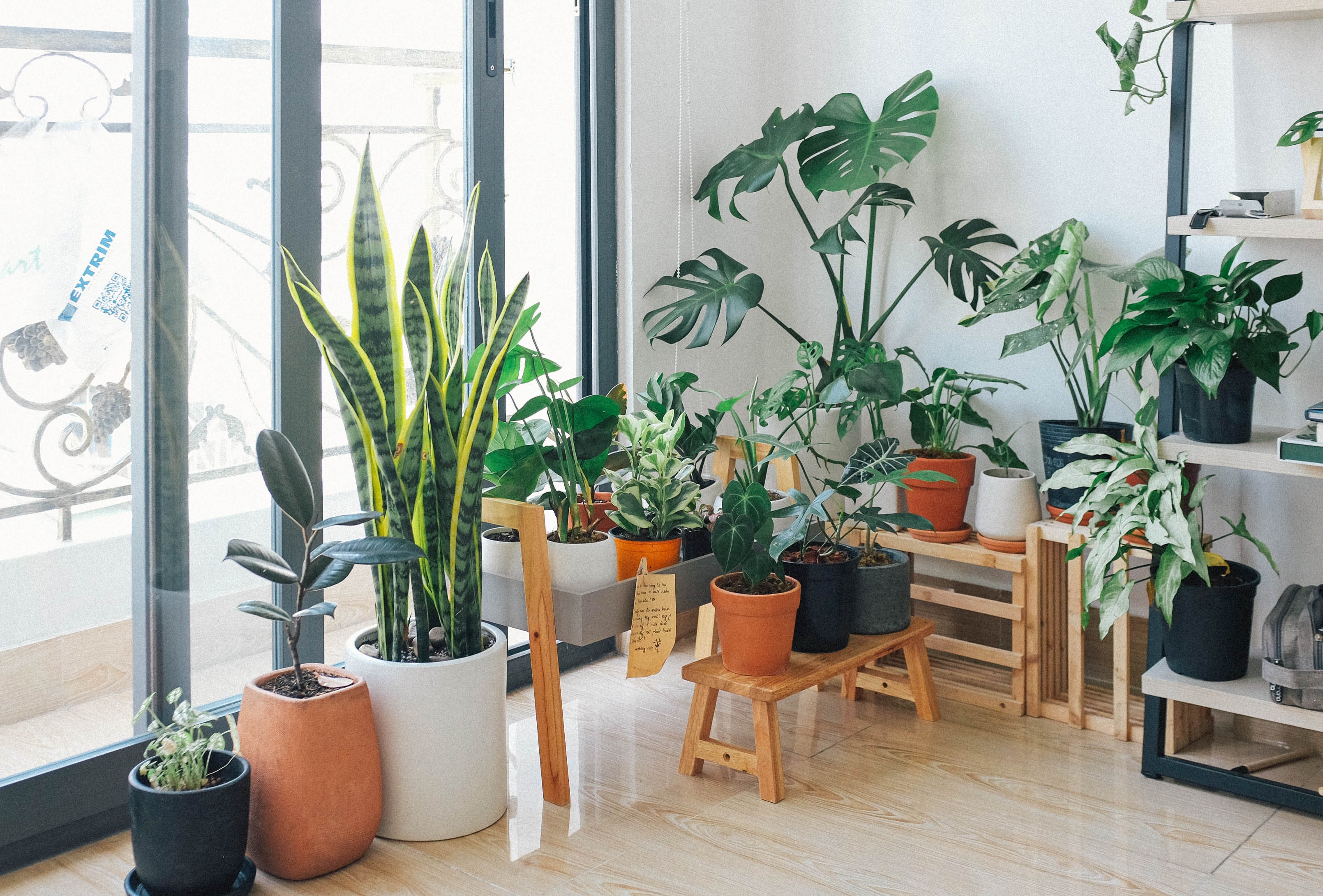In recent years, house-plant hoarding has been criticized as a millennial obsession. We give our pot plants names (meet Jean-Pierre) and are ridiculed for spending too much money and time adding our prized greenery to our Instagram feeds.
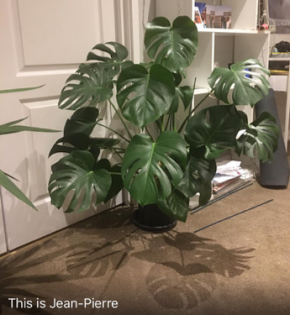
But has the status-quo shifted during lockdown? To find out, I took to Twitter with a call-out to ‘show me your plant babies!’ In the many responses, I was especially impressed with the variety of decorative ceramic pots, tin containers and glass domes. One terrarium was even filled with shells, pebbles, a toy elephant, and displayed in front of Ionic Greek columns—a modern-day cabinet of curiosities. Over the last couple of months, it seems that all ages have embraced the benefits of plants.
For those of us living in flats, without access to our own green outdoor space, the recent lockdown has demonstrated how much we crave nature. Samantha Manton’s pandemic object essay on gardens has already revealed the social class divide, between those privileged enough to have private green space, and the rest making do with quick walks and picnics in parks. House plants have been a saving grace for many. They have allowed us to bring the outside in by injecting a bit of greenery into our domestic living spaces. Scientific research has confirmed that certain house plants can help to improve air quality, and even increase our levels of concentration – which is useful, considering the many other challenges of working from home.
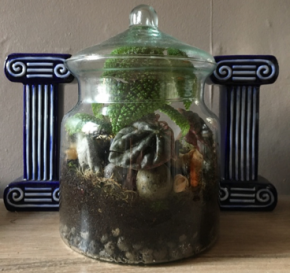
The global pandemic has seen the current-day potted plant industry flourish. Evergreens, ferns, aloes, and cacti have ensnared us all. Despite the closure of thousands of garden centres, there has been an increased demand in buying plants online. This saw the Horticultural Trades Association (HTA) launch a new website called Plants Near Me, which helps you locate your nearest garden centre. In fact, in May and April 2020 the HTA saw a 252% increase in visitors to their website.
But what is the historical origin of potted plants? We’ve been obsessed with adding greenery to our interiors for centuries now, as far back as the fabled Hanging Gardens of Babylon. In c.600BC, King Nebuchadnezzar of the Neo-Babylonian Empire created a botanical haven for his wife Queen Amytis with plants and flowers hanging from the ceiling. Over the years, plants have continued to be seen as a status symbol of wealth and power. In 1652, the English agriculturist Sir Hugh Platt in his treatise The Garden of Eden encouraged the cultivation of indoor plants, especially during the winter months. This saw the wealthiest in society start to build greenhouses and orangeries. At the same time, ‘tulipmania’ – an intense period of demand and speculation for the flower – took over elite homes in Holland and England, as can be seen in this Delft flower pyramid from c.1695.
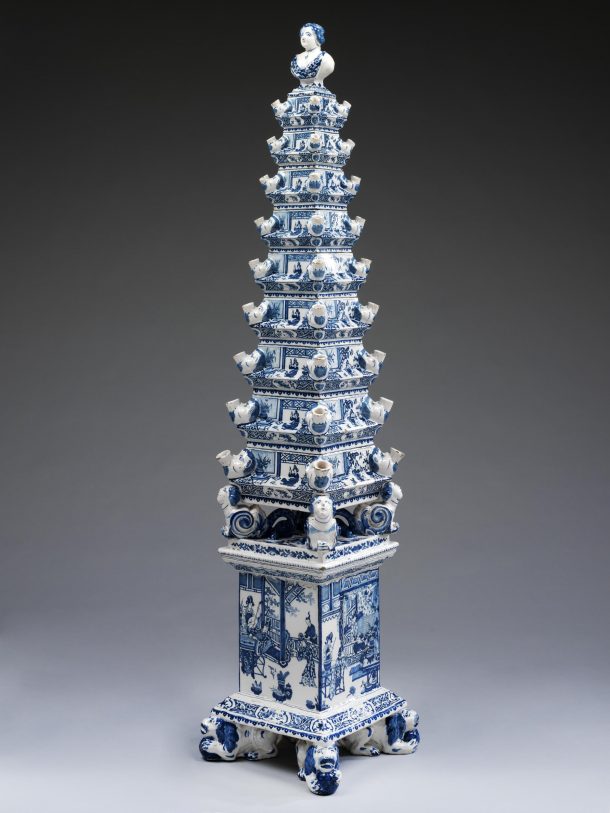
In France, the 18th Century saw the birth of the Age of Enlightenment, ushering in new ideas about the natural world. Jean-Jacques Rousseau for example, a keen botanist and philosopher, believed that as people we are fundamentally better surrounded by nature. In his book, The Confessions (1782), he fondly recalls how as a child, he witnessed the planting of a walnut tree outside on a terrace: “every day, eager spectators of this watering, my cousin and I became more strongly convinced, as was natural, that it was a finer thing to plant a tree on a terrace than a flag upon a beach”. From the 1750s onwards, a rising need for portable indoor flower gardens encouraged a new luxury goods market. Decorative pots of all shapes and sizes suddenly appeared, produced by ceramics factories such as Meissen in Germany, and Wedgwood in England. This blue and gilt Sèvres porcelain flower pot, for instance, would have been used for growing bulbs indoors.
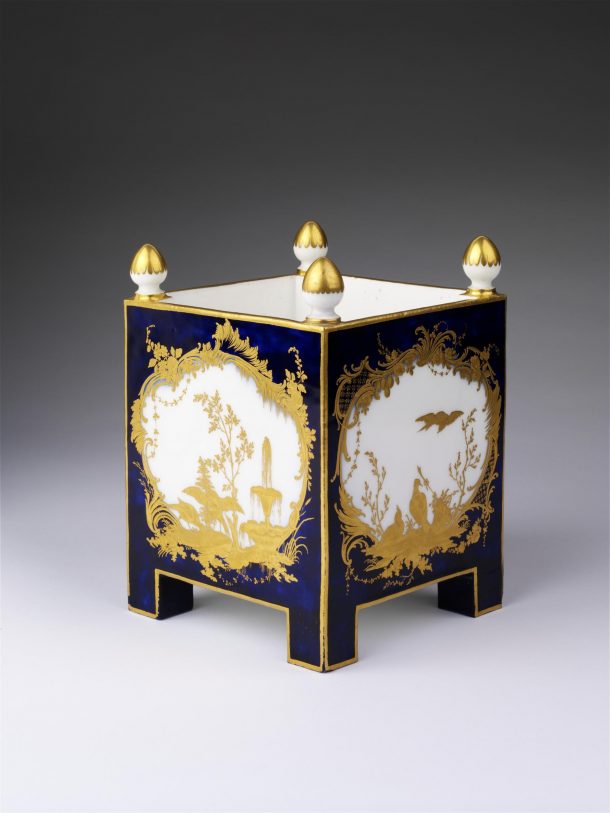
Despite this, we haven’t always been so strict about putting our plants in pots. In fact, Madame de Pompadour, the infamous mistress of King Louis XV in France, owned so many French porcelain wine-coolers that it is now thought that she used them as flower pots. Filling them with bulbs and plants, but also with artificial porcelain flowers. These porcelain flowers, to which scented perfume was added, were mounted on bronze stalks to create bouquets and set into porcelain containers. The story goes, according to Richelieu, that Madame de Pompadour once decorated her rooms with so many pots filled with porcelain flowers that Louis XV once tried to pick up a bunch as they smelled so realistic.
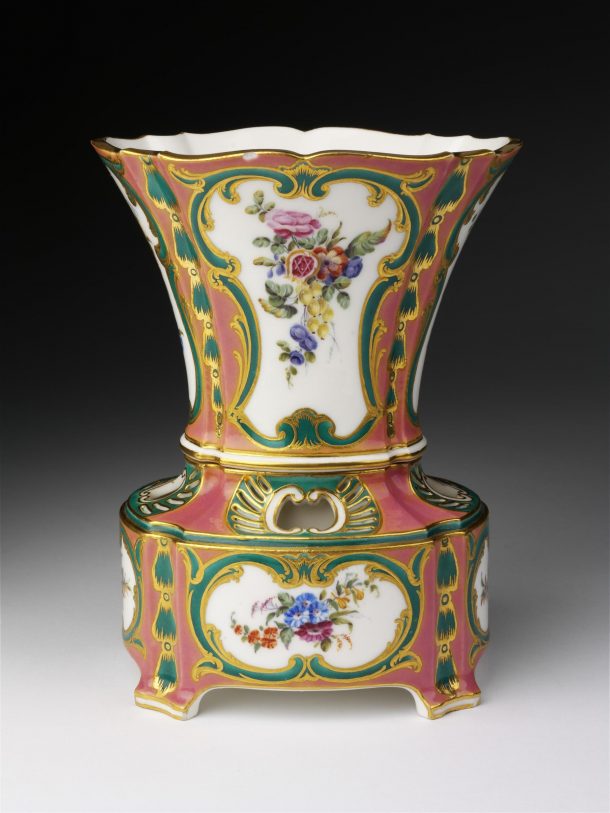
House plants, whether porcelain or real, have never lost that sense of artifice. Today, we add towering cactus plants and pots of perennials to our homes to help us construct an artificial green oasis, a calming illusion of having direct access to the natural world outside. Taking care of pot plants can be hugely therapeutic, but it can also help us feel a little bit more in control. So perhaps it’s no surprise that their sales have jumped during COVID-19, as we try to bring back some sense of agency into our daily lives – by recreating our own Hanging Gardens of Babylon.
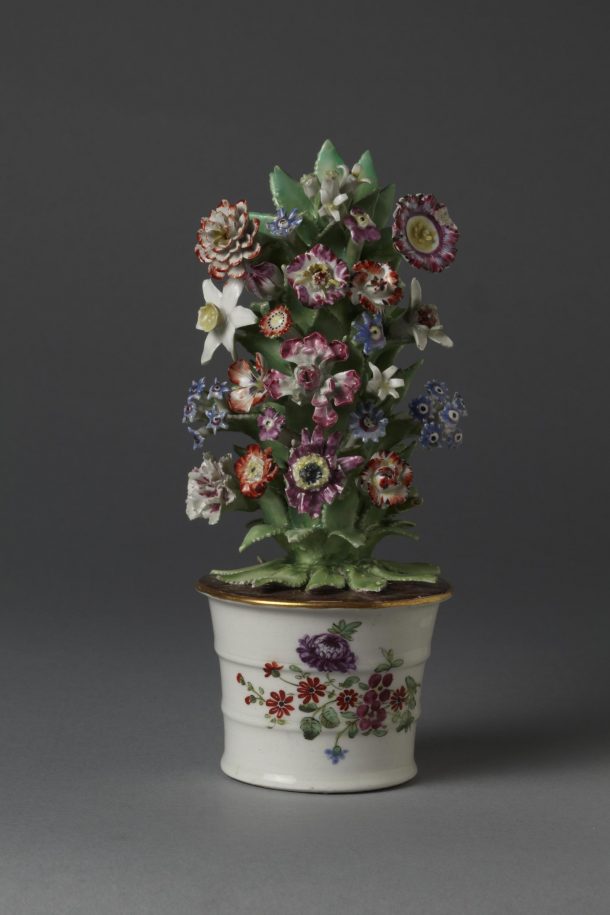
Further Reading:
‘Why do millennials love house plants as if they were pets?’, Josh Glancy, The Times, 24 March 2019.
‘Houseplants enjoy a growth spurt in popularity’, Alice Hancock, The Financial Times, 27 April 2018.
Mimi Hellman, ‘The Nature of Artifice: French Porcelain Flowers and the Rhetoric of the Garnish’, in The Cultural Aesthetics of Porcelain in the Eighteenth Century, ed. Alden Cavanaugh and Michael E. Yonan, 2010, pp. 39-64.
Catherine Horwood, Potted History: The Story of Plants in the Home Hardcover, 2007.
